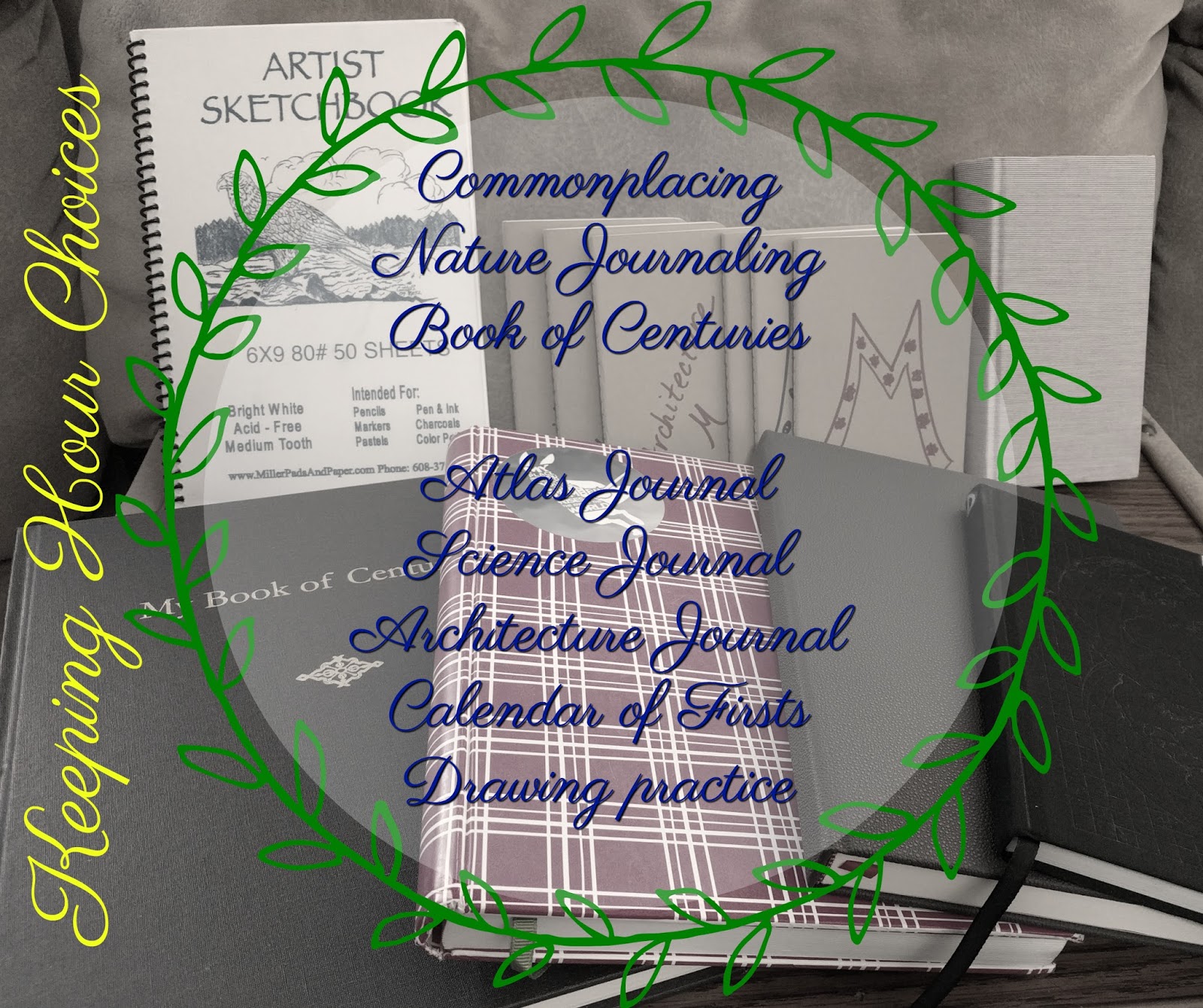Keeping
Nearly all I now about keeping is from Laurie Bestvater’s book, The Living Page. If you haven’t read it, I encourage you to do so as soon as you can. She has done a yeoman’s work and served the CM community well with that work.
There are, in that book, many practices. Many are flexible. Some are for some ages; some are for others. Keeping can be beautiful, but don’t let the beauty of what is shared online intimidate you. Remember, the best of the best is often what is shared; it’s cropped and edited. Keeping is something to grow into and we all must start somewhere.
Growing into it is better than the method I used: inundation. I introduced them all at once – here are all these notebooks, add stuff to them. We started CM and Keeping “late” and I didn’t want to miss out on the benefits. Building practices over time, even 6 week by 6 week term would have been better.
One way to start small is to practice keeping for yourself. A Commmonplace Book or a Nature Journal are natural places to begin.
As you read and you find a beautiful or thoughtful quote – an idea you want to ponder, a beautifully crafted sentence, a concept that challenges you and your thinking, or, best, all of the above – copy it down. Share it with someone: your husband, your children, your neighbor, the dog. Be excited an interested. Repeat. Soon, you’ll be collecting quotes from everywhere.
Add a Nature Journal to your own practices. When you go outside, observe one thing closely. Wonder what it is. Take note of its characteristics: size, shape, color, locale, etc. If you can bring a sample home with you, or a take a photo. But if you can, make yourself pay close attention and reproduce it in your mind’s eye, so much better. At home, draw it. Many people will say you should only dry brush water color , and, while that’s an admirable goal, I think you should just get in the practice of regularly putting images on paper. You can draw in the field, but I’m more comfortable drawing at home. Don’t underestimate the value of careful observation and holding the image in memory. Then, be excited about your book. Fill it up. Share it with others: your parents, your siblings, your pastor, whoever.
Let your children see that keeping is a grownup activity, not just busywork you’re assigning them. Here’s a safe place to start. I bet you find you enjoy it, too. This is a way you, the mom, set the atmosphere in your homeschool.


I just started reading that book last night, and it resonates so much with me (and my kajillions of random notebooks. . . none “kept” with intense purpose, but still gathering the stray thoughts and images throughout my days.
Lovely to see you Alexandra <3
I like the dedicated books, but I also like the jumble of ideas within each one 🙂
I have that book and have started reading it at least twice, but not gotten very far. My children are grown but I’m still SO very interested in homeschooling, and of course if you’re alive – you’re learning. I occasionally keep track, even for months, on what I’m reading and studying on my own, but then something happens that throws me off my plan, and I don’t get back to it but rather start something new. Not the best way to go though. Still, I’m always learning! Love that you’re working on notebooks.